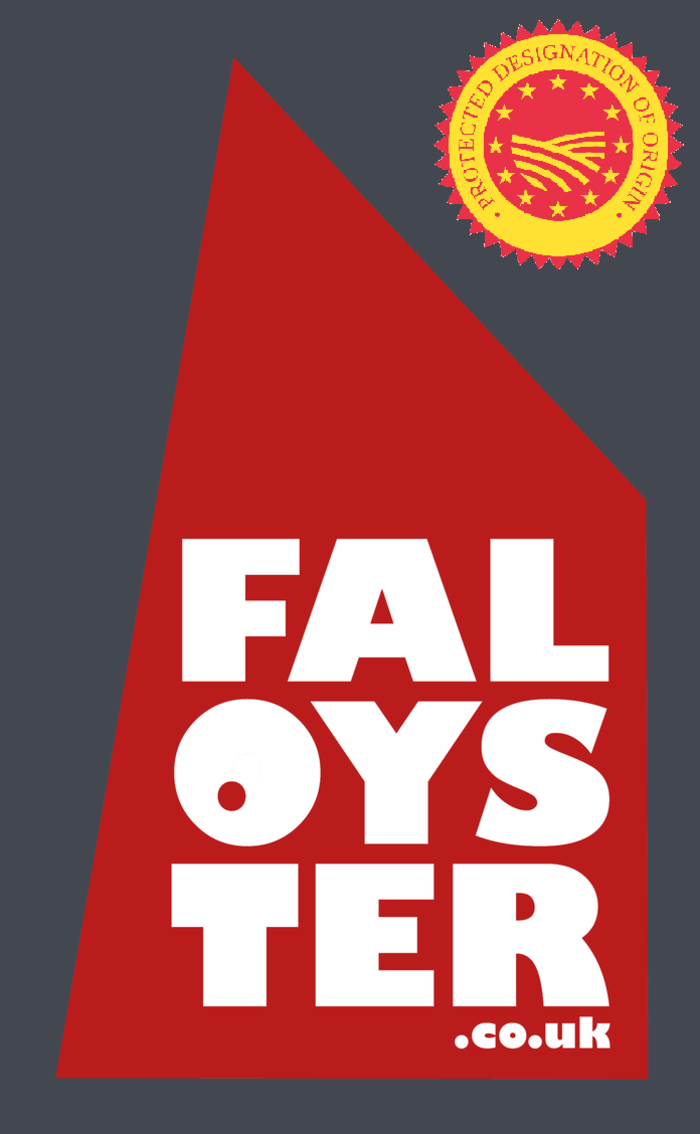Hove too in a political storm... October 07 2018
Hove too in a political storm...
Working one of the last traditional sailing fishing vessels, and gathering wild ‘Cornish Native Fal Oysters’, on one of the last natural native oyster fisheries, is far from plain sailing... While bylaws and regulations dating back centuries are helping to protect the traditions, the fishery is selling itself short and the oysters themselves are not providing the economic income that they once did.
Despite having a very unique history and a very unique Protected Designation of Origin (PDO) status, the ‘Fal Oyster’ is not just a native oyster ‘produced’ from the Fal Oyster Fishery, it also has to be ‘processed and packaged’ on the fishery before it gains the prestigious PDO title.
Producers must prove full traceability from day of gathering, through grading and processing to packaging and delivery, companies are inspected by: Trading Standards, Port Health Authority and DEFRA/CEFAS, all authority’s adopt the CIFCA Fal Fishery Regulations 2016 and to date only one company has been approved by all - Fal Oyster Ltd. t/a Cornish Native Oysters, based at Mylor Yacht Harbour since 2009
Economically the ‘PDO Fal Oyster’ is operating at a tiny fraction of what it could be providing for a country about to leave the EU, but can that all be about to change... an average of 50 tonnes of native oysters are landed from the Fal Oyster Fishery per season (October-March), a peak of 89t a few years ago and a historical record of 300t a century or so ago... in today’s money 50t is worth about £165,000-£200,000 to all the vessels that work the winter weather.
Less than 5% of the yield is sold under the PDO Fal Oyster name but the trade price does yield a much higher return per kilo, £10-12 pkg compared to £3.30-£4 wholesale price. As a retailer of the unique oyster value can be £25-£55 pkg depending on whether you are in Falmouth or Mayfair! You can visit the 10th Pop Up Fal Oyster Wink at The Front Falmouth between 11-14th October and feast yourselves on genuine hand sail and oar gathered, hand processed and hand packed Fal Oysters.
One London retailer commented: “I’m sorry, the Fal Oysters just don’t sell as well as the French Oysters!”.... I bet you are thinking ‘do they sell UK Oysters in Paris?’ the answer is probably yes because at least 50t of native oysters were exported from the Fal Fishery to France last winter. If there are 20 small 50g oysters in a kilo, that’s 1,000,000 oysters sold for as little 17p each!
Some of the yield from the Fal Fishery is sold to other fisheries in the UK, the oysters are processed and or stored before being rebranded. A Protected Geographical Indication (PGI) would be given if the area was well known for the product, but the product itself not ‘produced’ in the area... a well known UK Oyster Company has flourished on the PGI oyster status, yet the exploitation of our produce is destroying our fishery while others are trying to restore native oysters everywhere.
A report about to be published identifies by far the most lucrative return per kg is selling last years juvenile catch (that is stored on lays for a year or two before harvesting in September) at the annual Falmouth Oyster Festival, some 20,000 oysters are sold to the 40,000 visitors, but it’s not open to all oystermen of the Fal!
The other big problem is the misrepresentation by some of the big fish merchants in the UK, if a chef is told they are buying Fal Oysters or Cornish Native Oysters that’s what goes on the menu and ultimately that’s what the customer believes they are eating... in fact Cornish Native Oysters is the trading name for the approved depuration premises and Fal Oyster has a Protected Food Name, both names are being used to sell oysters that have not been processed at Mylor and therefore not benefiting the local economy.
This in turn means the old boats don’t get restored, the recruitment of crew doesn’t happen and the company spends all its time campaigning for a better fishery for all.
DEFRA have recently published two consultation documents: Consultation on establishing UK Geographical Indications (GI) schemes after exit (from the EU), which at least gives hope to a UK scheme, and Consultation on improved enforcement of the Protected Food Name Scheme, which gives hope to preventing the exploitation of the name and more importantly the fishery itself.
GIs are a form of intellectual property protection that identifies a product as originating in a country, region or locality where a given quality, reputation or other characteristic of the product is attributable to the place where it is produced.
A total of 862 products from the UK are registered as GIs under the EU schemes: 76 agricultural and food products, five wines and five spirit drinks. The UK’s GIs represent over £5 billion in UK export value each year (25% of all UK food and drink exports by value) and play an important role in rural economies.
